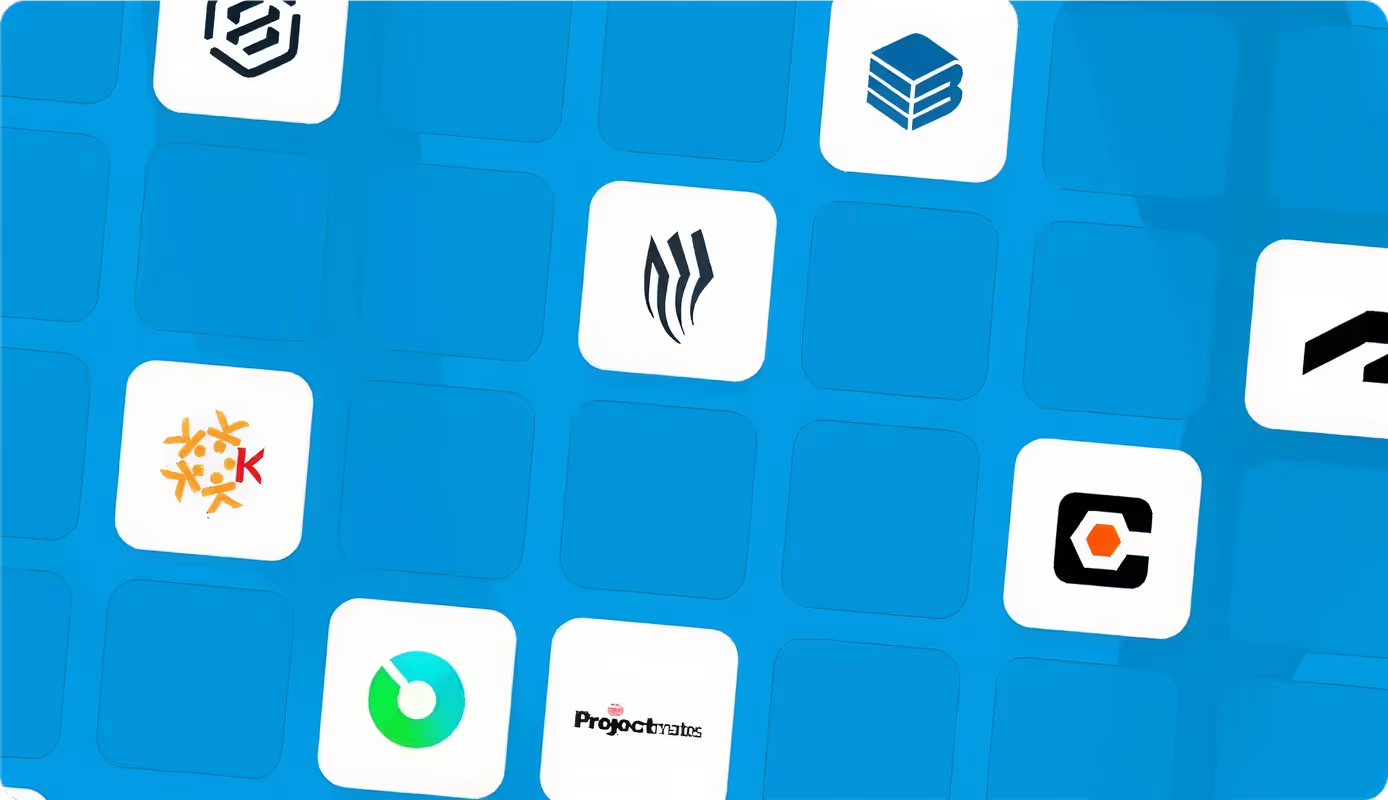Find the best project controls software in 2025. Compare features, pricing, and tools to track cost, schedule, and risks with confidence.

When projects become complex, project controls software provides the clarity and control you need. Stay ahead of delays, prevent overruns, and deliver projects with certainty. Here are the top platforms in 2025:
Project controls software is a digital system that manages cost, schedule, and risk on construction projects. It centralizes budgets, forecasts, schedules, and performance data in one platform. The software automates tracking and reporting across these areas.
Most software includes modules for budgeting, scheduling, risk registers, and contract management. It captures actual costs, progress updates, and timeline changes as they happen. Teams use it to monitor financial performance, track milestones, and manage project documentation.
Integrated project controls software operates by centralizing data, automating processes, and providing teams with real-time visibility into performance. This platform works through these key functions:
Beyond daily tracking, the project controls tool builds a historical record of performance data. These records allow teams to benchmark future projects, refine estimates, and improve long-term planning accuracy.
Tools for construction project controls deliver benefits such as stronger oversight, accurate cost tracking, and proactive risk management, making them an essential tool for complex delivery. Here are the main advantages it provides:
These advantages also extend to long-term project performance. Accurate forecasting and automated reporting cut disputes while improving predictability and accountability. The result is a more transparent and efficient project environment where reliable data informs decisions.
The ideal software for project controls should include cost tracking, scheduling tools, AI-powered automation, and other relevant features. Look for capabilities such as:
A checklist of features isn’t enough to evaluate construction project controls software. Teams should assess how each platform applies automation, AI, and reporting in practice, ensuring the tools provide real support and measurable value across projects.
Finding the best construction project controls tools depends on project scale, complexity, and reporting requirements. Use these steps to identify the best fit:
Step 1: Define Your Control Priorities
Determine which factor is most critical for your projects: cost, schedule, risk, or reporting. Smaller projects may only need budget tracking, while large portfolios require advanced forecasting and automation.
Step 2: Match Features to Complexity
Look for features that fit your project type. A single construction project might only need dashboards and cost tracking, while complex infrastructure programs demand risk registers, earned value analysis, and multi-project reporting.
Step 3: Check Integration Capabilities
Confirm that the platform connects with ERP, finance, scheduling, and document management systems. Without integrations, you’ll face duplicate entries and inaccurate reporting.
Step 4: Evaluate AI and Automation
AI-driven tools can handle payment reviews, automate form entry, and deliver predictive insights. Prioritize platforms that use AI to automate manual work and highlight risks early.
Step 5: Focus on Ease of Use
Software should be simple enough for daily use. If the interface feels cluttered or training takes too long, adoption will fail.
Step 6: Test with Your Team
Run a trial using real data. Involve project managers, finance teams, and site staff to see how each role interacts with the system.
Step 7: Compare Pricing Models
Review free plans, per-project pricing, and enterprise subscriptions. Free versions may work for one-off jobs, but large programs usually require advanced paid features.
Security and data ownership are also critical when comparing project controls software. Look into how each platform protects sensitive project information, manages access, and ensures compliance with industry standards. These factors can be just as important as functionality when managing large construction or infrastructure programs.
Projects will always face limits on time, budget, and resources, but the real advantage comes from how those limits are managed. With project controls software, precision and efficiency move from aspiration to expectation.
Recommended as the
Best Project Controls Software in 2025
Web-based, Cloud Integration
4.7/5 (Capterra)
Infrastructure & Public Works, Buildings & Real Estate, Industrial & Energy

Web-based, iOS, Android
4.5/5 (Capterra)
Construction, Engineering, and Real Estate Development.

Web-based
4.4/5 (Capterra)
Construction, Engineering, Oil & Gas, Infrastructure Projects, and other industries requiring robust project and portfolio management solutions.

Web-based, iOS, Android
4.3/5 (Capterra)
Construction, Engineering, and Architecture.

Web-based
3.8/5 (Capterra)
Engineering, Procurement, Construction, Oil & Gas, Power, Chemicals, Transportation Infrastructure and more.

Web-based, Windows
4.4/5 (Capterra)
Construction, Engineering, and Energy.

Web-based
4.2/5 (Capterra)
Construction, Government Administration, Oil & Energy, and other sectors requiring robust project management solutions.

Web-based, iOS, Android
4.1/5 (Capterra)
Construction, Real Estate, Engineering, and Infrastructure Development

Windows-based application
5.0/5 (Capterra)
Oil & Gas, Petrochemical, Chemical, Pharmaceutical, and other process industries.